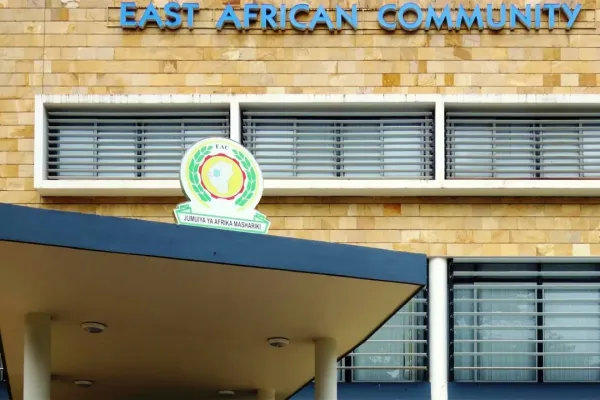High inflation, debt darkens Kenya's 2023 economic outlook
High inflation, debt darkens Kenya's 2023 economic outlook
Economic analysts at the Institute of Public Finance (IPF) expect Kenya’s economy to remain subdued this year on account of sky-high commodity prices, negative impacts of global events such as the Russia-Ukraine war, and a high risk of debt distress.
East Africa's largest economy could, however, post a remarkable upward trend if the government streamlines fiscal consolidation by among others cutting back on non-priority expenditures to catalyze increased investment and tackle inflation.
The findings were revealed in the Macro-Fiscal Analytic Snapshot 2022/23 reportreleased by the Institute of Public Finance (IPF) in liaison with Oxford Policy Management that projects a slowdown in Kenya's growth to 5 percent.
Kenya's inflation rate slowed for the second consecutive month to 9.1 percent in December 2022, the lowest since August, and compared to 9.5 percent in November. The Central Bank expects the country's economy to remain within its target range in the first quarter this year.
The IPF report also indicates that the deferment of fiscal consolidation in 2020 and 2021 made it difficult for the country to attain the necessary economic stability and resulted in the shift to “high risk” from “medium" debt distress.
IPF Chief Executive James Muraguri said that while there have been efforts by the government to tighten its fiscal policy, there is an urgent need to cushion Kenyans against high inflation, the impacts of the Russian-Ukraine war, and the depreciating value of the Kenyan Shilling against the US Dollar.
Read also: Coffee farmers to Gachagua: Weed out cartels and fix pricing of our produce
The Shilling has slipped 0.54 percent against the greenback this year after shedding at least 9 percent last year.
“The last two years saw the government set revenue and fiscal deficit targets that were overly ambitious. With limited buffers against external shocks, the government is finding itself in a tight spot as it tries to navigate the global tightening of the monetary policy and rising debt interest payments. With this in mind, we expect a change in policy direction focusing more on fiscal policy coordination to address surging price levels, cushion citizens facing hunger and starvation, and the successful distribution of subsidized fertilizer during the upcoming long rains,” Mr Muraguri said.
Donor aid to Nairobi has been on the decline between 2016 and 2020, the report adds, especially support for the economic infrastructure and services sector post-pandemic, partly because of a change in commitment from the financing partners.
ODA disbursements by various donor to Kenya
Donor 2016 2017 2018 2019 2020 % change from 2019 % of total ODA 2020 2016–2020 total % of total 2016–2020 United States 871 909 860 697 684 -1.86% 15.02% 4,020 23.46% World Bank 480 607 768 1,536 1,717 11.78% 37.70% 5,108 29.81% IMF .. .. .. .. 756 16.60% 756 4.41% Japan 170 174 235 299 222 -25.79% 4.87% 1,100 6.42% Agence Française de Développement 212 209 191 92 63 -31.90% 1.37% 767 4.48% United Kingdom 193 219 163 183 118 -35.57% 2.59% 876 5.11% Germany 96 134 97 95 105 10.52% 2.30% 526 3.07% France 96 82 115 135 242 79.38% 5.31% 670 3.91% Sweden 54 63 54 51 53 3.43% 1.16% 275 1.61% Global Fund 114 177 87 117 124 5.63% 2.72% 620 3.62% Other 492 539 459 455 471 3.58% 10.35% 2,416 14.10% Official donors, total 2,778 3,112 3,031 3,659 4,554 24.43% 100.00% 17,135 100.00% % change in total ODA disbursement -5.96 12.01 -2.6 20.73 24.43
IPF has urged the government to shift from donor reliance and to develop a domestic resource mobilisation strategy to bridge the current budget gaps.
Kenya has experienced an increase in total Official Development Assistance disbursement in 2017, 2019, and 2020, of 12 percent, 21 percent, and 24 percent, respectively with funds going to education, health, WASH, production, and the humanitarian sectors.
Lower borrowing should also create space for private sector credit and higher investment in the health, agriculture, and education sectors which are critical pillars for long-term economic growth.
IPF also reckons that some of the key focus areas likely to shape economic performance during the current budget cycle include; the need to ease fiscal pressure through budgetary consolidation, harmonisation of revenue measures, level of debt distress, support to the agriculture sector, reorganization of the health budgets as well as the performance of the county governments.
“Our projections point to some pain for the local mwananchi especially in the shorter term as the government continues to implement its macro-stability agenda. Sustained poverty reduction and growth over the next few years is possible if the government makes good its intentions to support the manufacturing and export sectors,” Mr Muraguri added.



